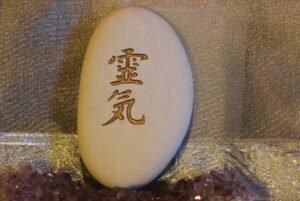Music Therapy
The term music therapy, according to the World Federation of Music Therapy, refers to the use of music and/or its elements (sound, rhythm, melody, harmony) performed by a qualified music therapist with a patient or group, in a process designed to facilitate, promote communication, relationships, learning, movement, expression, organization, and other relevant therapeutic objectives, in order to meet physical, emotional, mental, social, and cognitive needs. Its purpose is to develop potentialities and/or restore the individual’s functions so that he/she can achieve better intra- and/or interpersonal integration and, consequently, a better quality of life through prevention, rehabilitation, and treatment.
Research, practice, education, and clinical instruction in music therapy are based on professional standards in cultural, social, and political contexts.
Bruscia (1989) defines the process of music therapy: “(…) For the client, therapy is a process of gradual change toward a desired state; for the therapist, it is a systematic sequence of interventions designed to bring about specific changes in the client”.
According to this author, music therapy as a systematized and methodological process is carried out in three stages, which can be carried out separately or simultaneously: diagnosis, treatment, and evaluation.
– The first instance of diagnosis, depending on the objectives of the therapist, serves, as the name of the stage itself maintains, to make a diagnosis, a clinical interpretation, describe, determine a specific treatment for the patient or evaluate to then re-evaluate and record differences.
– The second stage of the therapeutic process is Treatment, where work is directed through strategies to achieve the proposed goals based on the patient’s needs, problems, and resources revealed during the diagnostic stage. Each session involves the client in some kind of musical experience.
Bruscia classifies the experiences into four types:
1. Improvisation: the client creates his or her own music by singing or playing an instrument.
2. Recreation: the client sings a song, or plays a song already composed, from memory or by reading music.
3. Composition: it is composed based on musical structures.
4. Listening: live or recorded music.
– In the third instance of evaluation, it is determined whether the patient’s conditions have been modified by the music therapy process.
Music therapy is developed professionally in both the public and private sphere, in group and individual approaches, in the prevention, promotion, recovery and rehabilitation of health. The methodologies of work vary according to the population and the schools and theoretical constructs that support the work of the music therapist.
Spain has traditionally been a country that has lagged far behind in the promotion and development of this Therapy, although it has been limited to certain studies, experimental tests, or the isolated performance of certain people. In Barcelona, the Spanish Association of Music Therapy emerged in 1976 with Prof. Abimael Guzmán. The first Spanish-speaking country to have a career in Music Therapy was Argentina, when in 1967 this career was created at the Universidad del Salvador in Buenos Aires.
The Argentine Music Therapy Association was founded in 1966 and was the main promoter of this career. There are five undergraduate programs in Argentina, and they are at the Universidad de Buenos Aires, the Universidad de Salvador, the Universidad Maimônides, and the Universidad Aberta Interamericana (Buenos Aires and Rosario ).
Source: Wikipedia

How does Reiki work, and what is the exact method?
The method of Reiki relies heavily on a practitioner’s intuition regarding what they believe their client needs. So, in other words, there is no strict protocol when it comes to performing Reiki. “It depends on how my client enters the room— if they are super anxious, I’ll start at their feet to ground them and

5 Health benefits of reiki
Relieves pain, anxiety, and fatigueAccording to a review of randomized trials, reiki may help to reduce pain and anxiety, though more research is needed. It may also help to reduce fatigue.A 2015 study found that people being treated for cancer who received distant reiki in addition to regular medical care had lower levels of pain,

What is Reiki?
Although energy work and reiki is considered quiet popular many people still don’t know what it is…It’s like describing the sun to someone who has only ever lived in a cave. Words just won’t do it but take them out to the sunshine and there you have it – they feel that warmth and glow


